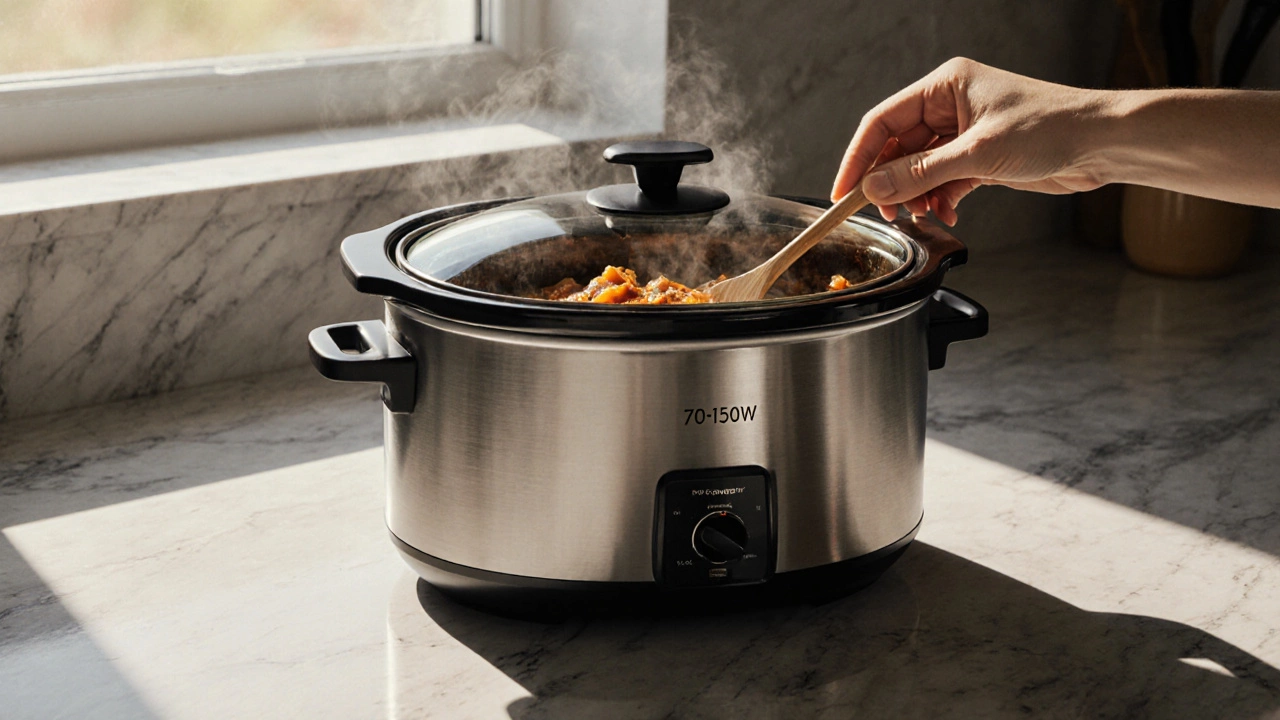Slow Cooker Electricity Usage Explained
When talking about slow cooker electricity usage, the amount of power a slow cooker draws while it cooks. Also known as slow cooker energy consumption, it determines how much you pay for those set‑and‑forget meals.
Another key player is energy consumption, the total kilowatt‑hours a device uses over time. Understanding this helps you compare a slow cooker to other kitchen appliances, like ovens or microwaves, that have different power draws. The relationship is simple: higher energy consumption usually means a higher electricity bill.
Semantic connections you’ll see: "slow cooker electricity usage" encompasses "energy consumption"; "accurate measurement" requires a plug‑in power meter; and "energy consumption" influences "electricity cost". These triples lay the groundwork for practical advice later on.
Why Power Matters for Overnight Cooking
Most people set a slow cooker before bed, assuming it’s safe to leave on. That safety belief ties directly to the appliance’s power draw. A typical 1500‑watt slow cooker uses about 3.6 kilowatt‑hours if it runs for 12 hours. Multiply that by your local rate—say £0.20 per kWh—and you’re looking at under £1 per night. Knowing the exact numbers lets you decide if overnight cooking fits your budget.
Safety isn’t just about fire risk; it’s also about electrical load. Plugging a slow cooker into a circuit already powering a fridge or dishwasher can overload the breaker. Checking the circuit’s total amperage (usually 13 A in the UK) against the slow cooker’s draw (about 6 A) prevents tripped fuses. This is where understanding the power rating, the wattage listed on the device label becomes crucial.
If you want to cut down cost further, consider the energy‑efficient model, slow cookers that use 30‑40 % less power thanks to advanced insulation. These models still reach the low simmer needed for tender meat but draw less electricity, shrinking both your bill and environmental impact.
Measuring usage is easy with a plug‑in electricity meter. Plug the meter into the wall, then the slow cooker into the meter. Run a typical recipe and note the kilowatt‑hours displayed. This single step gives you the data to compare recipes, settings, and even brands. Many cooks discover that using the “low” setting for most meals cuts usage by half without sacrificing flavor.
When you factor in electricity cost, the price per kilowatt‑hour charged by your utility, you can calculate exact savings. For example, swapping a 12‑hour high‑heat cycle for a 24‑hour low‑heat cycle may use the same total energy but spread it over a longer period, lowering peak demand charges if your provider uses time‑of‑use pricing.
In short, knowing your slow cooker’s electricity usage gives you control over safety, cost, and environmental footprint. Below you’ll find a curated set of articles that dive deeper into the numbers, safety tips, and practical ways to make your slow cooker work smarter for you.

Do slow cookers use a lot of electricity? - Energy facts and cost guide
Find out how much electricity a slow cooker uses, compare its cost to other appliances, and learn tips to save energy while cooking.
More Detail